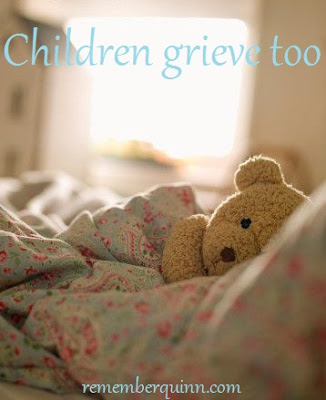The other day, Riley was painting a picture for her cousin and announced it was “for her sister.”
She calls a couple of her close girlfriends “sister.” Hearing her say the word sister warms and
breaks my heart at the same time. Oh, if
only she knew that she is supposed to have a living sister! Or does she?
Are these pronouncements an indication that she remembers my pregnancy
and yearns for the same child that my husband and I do too?
All of this has resurfaced concerns on how to raise a child
after stillbirth. How do you build a healthy
relationship between siblings when one is alive and one is dead? How do you raise a living child to know that
she is enough - especially, if you try to have another child? How do you strike a balance between memorializing
your loved one but not over glorifying?
We struggle with these questions every day. Talking to a 2 year old about pregnancy and
death is a complicated challenge as she doesn’t fully understand the concepts
of pregnancy, birth, or death. I expect
there will be times when Riley is older and will grieve her sister, since
she didn’t have the same awareness about death after Quinn’s actual stillbirth.
My counselor has been a lifeline for these issues and I’m
sure she will continue to be for years to come.
She recommended following the child’s lead. I have been worried that I am not building a strong enough relationship between Riley and Quinn.
Riley is familiar with the word sister and hears me say Quinn’s
name, but she doesn't really understand.
Although we do special things as a family for Quinn, I must
be patient and sensitive to Riley’s development. Riley’s awareness of her real sister will
come with age and I hope I can help them foster a special bond.
This passage from Sands (a phenomenal organization in the UK
for stillbirth and neonatal loss support) helps guide me through this journey:
“If, from time to time, you talk
about the baby who died and use his or her name, your child will grow up
knowing that they had a baby brother or sister. If you display photos of the
baby, and involve your child in anniversaries or memorials for your baby, this
becomes a normal part of your child’s life. It offers opportunities for them to
ask questions and for you to tell them what happened…
Older children who discover later
that they had a baby brother or sister who died, especially if this was their
twin or triplet, may feel shocked, upset or angry that they were not told
earlier. Some may not trust you to tell them other important things.”
The big takeaways from my counselor and online researching
(mainly Sands) in regards to supporting living children after stillbirth are as follows:
1.
Take the child’s lead. There may be things you want to tell or
explain to your living child, but developmentally he may not be ready. Do and say what is appropriate for now. More detail can be provided when the child is
older and it is developmentally appropriate.
2.
Be honest.
Talk in simple words and concepts.
3.
Manage your own feelings. Be open and honest about your feelings. It’s OK and healthy to grieve in front of
your living child but also provide some normality to their lives.
a.
For me, it broke my heart to have Riley
constantly at home where the mood was so sad.
I asked (begged) family to offer her play dates so she could have moments
of happiness away from the constant grief.
If you are looking for ways to help a grieving family – this is my
biggest recommendation. Offer to give a positive
experience to their living child(ren).
4.
Involve children.
a.
Ask the child if she wants to contribute
something to the baby’s memory box.
b.
Involve them in anniversary or other special
dates. The Sands brochure makes an
important note, however, that some children may enjoy participating in rituals
that occur on anniversaries, while other children may find it too difficult or
sad.
These takeaways are relevant to our family right
now. Our living child is 2 and I am sure
this list will grow and change as she gets older.
---
The full Sands brochure, “Supporting Children When a Baby
Has Died,” can be found here.


No comments:
Post a Comment